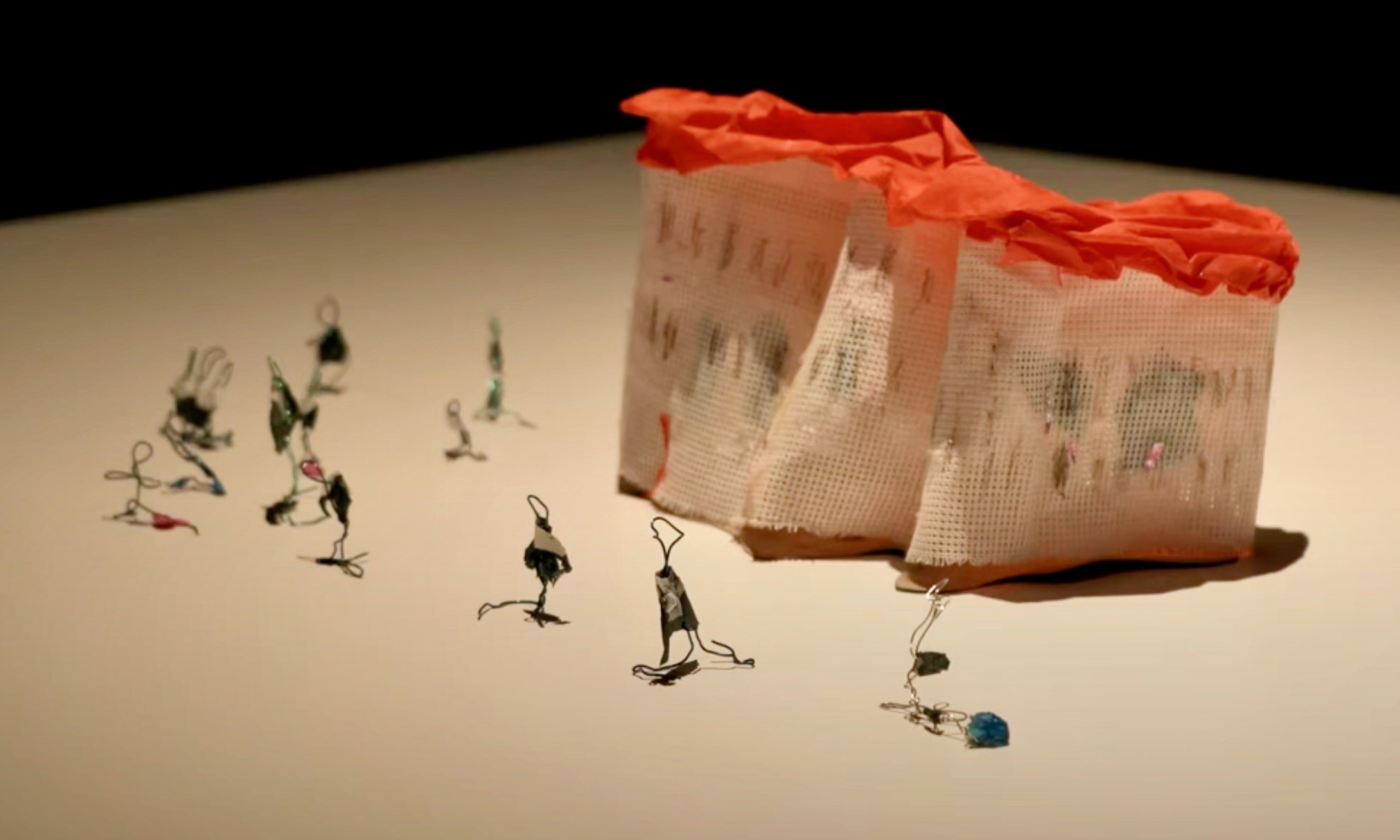Hew Locke’s Cardboard Palace shows the different textures of cardboard, which give a sculptural depth that my Prelude cut-outs don’t – and he further cuts into it to give it texture. When working with this poor material, you can use it as flat, textured or both.
Artists to research:
Marcel Dzama makes small avant-garde films that have exaggerated performances and little drawings using felt.
Jon Pylypchuk is an American artist who works with 3D cardboard shapes of humans and animals, paintings and felt cut-outs. There is always a little narrative, such as the racing horse that is half cardboard with a leg encased in concrete. Primitive in style but very carefully done. There is a need to be careful of sentimentality when working with poor materials.
Nathalie Djurberg, video artist – see Youtube interview with Hans Berg. Makes immersive sculptural landscapes.
I need to work out what kind of aesthetic I am going for – extremely minimal or a big installation with lots of stuff to look at and discover, such as Mike Nelson, whose work is abject. Nelson makes huge rooms where, even though they are entropic, every detail is purposely made and carefully choreographed. His works are theatrical and constructions of entropy. These are places to dwell. Or with the work of Ian Kiaer, which are fragile groupings of carefully chosen items.
Étant Donnés, 1966, Marcel Duchamp. Image courtesy www.dreamideamachine.com/?p=16663
In an installation, what do I want my audience to do – look at it from afar, or be invited to come into the work and be interactive with it? If I go for interactivity, I need to consider the fragility of the materials used. I could go down the route of Duchamp’s The Illuminating Gas, a peep show, where viewers look through a hole in a wall to see a naked female figure lying prone in a wilderness that has the layers of scenery, thus building a perspective. I like the idea of drawing viewers into my work, not just using their eyes, but also their whole body.
Doodle of a vortex perspective for the Winter Show. Photo Shirley A
Having a lot going on works in telling a rich story. Use lots of little bits and include lighting to make a convincing environment, such as the little hands that Jamie George used at his SE8 gallery show. These hands came from Naples, where they are used in nativity scenes. Nico’s suggestions recall one of my favourite works at the 2022 Venice Biennale in the Turkish pavilion by Fusun Onur. In a large, dimmed room Onur hung several platforms to display tiny sculptural scenarios made from everyday materials, and which were based on childhood memories and objects, like my own project.
Fusun Onur’s Once Upon A Time… at the 2022 Venice Biennale: small, everyday scenarios constructed from small everyday materials. Image Vernissage TV


